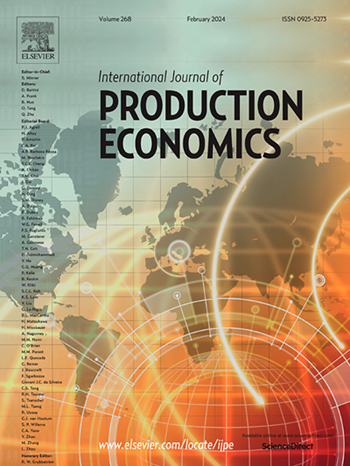Bridging uncertainty: A data-driven DRO approach for correcting censored demand in newsvendor problems
IF 10
1区 工程技术
Q1 ENGINEERING, INDUSTRIAL
引用次数: 0
Abstract
When dealing with short-life cycle products, small and medium-sized enterprises (SMEs) commonly confront challenges stemming from limited local censored demand data. This often leads to a lack of comprehensive understanding of demand distribution and can result in suboptimal order decisions. To address this issue, we introduce a data-driven newsvendor framework that combines a novel cost-driven data correction procedure with distributionally robust optimization (CDDC-DRO). With cost minimization objectives, the proposed procedure integrates local censored demand data and external demand information to adaptively generate high-value improved censored datasets, while circumventing reliance on static correlations. Furthermore, we consider the granularities of external demand information and propose three DRO-based data correction strategies to effectively reduce demand censoring. Tests on both simulated and actual data indicate that the CDDC-DRO procedure adaptively corrects censored data based on demand characteristics and cost structures, thereby eliminating significant errors induced by demand censoring and improving the precision and robustness of order decisions. The correction degree of the improved censored datasets dynamically depends on cost structure. A high degree of data correction is employed under high critical ratios, whereas a minimal correction degree is applied under low critical ratios. In response to the significant negative impacts of demand censoring, SMEs prefer to implement the DRO-based data correction strategy with finer-grained external demand information. This strategy enhances correction capabilities while minimizing variations in decision accuracy. Even when finer-grained external demand information is unavailable, SMEs are able to make well-informed order decisions using the DRO-based data correction strategy with local censored demand data.
弥合不确定性:一种数据驱动的DRO方法,用于纠正报贩问题中的审查需求
中小型企业(SMEs)在处理生命周期较短的产品时,通常会面临因本地需求数据有限而产生的挑战。这往往会导致对需求分布缺乏全面了解,从而做出次优订单决策。为解决这一问题,我们引入了数据驱动的新闻供应商框架,该框架结合了新颖的成本驱动数据校正程序和分布稳健优化(CDDC-DRO)。以成本最小化为目标,所提出的程序整合了本地删减需求数据和外部需求信息,以适应性地生成高价值的改进删减数据集,同时避免依赖静态相关性。此外,我们还考虑了外部需求信息的粒度,并提出了三种基于 DRO 的数据校正策略,以有效减少需求删减。对模拟数据和实际数据的测试表明,CDDC-DRO 程序能根据需求特征和成本结构对删减数据进行自适应修正,从而消除了需求删减引起的重大误差,提高了订单决策的精确性和稳健性。改进后的删减数据集的校正程度动态地取决于成本结构。在临界比率较高的情况下,采用较高的数据校正度,而在临界比率较低的情况下,则采用最低的校正度。针对需求删减带来的巨大负面影响,中小企业更倾向于利用更精细的外部需求信息实施基于 DRO 的数据校正策略。这种策略既能增强修正能力,又能最大限度地减少决策准确性的变化。即使无法获得更精细的外部需求信息,中小企业也能利用基于 DRO 的数据校正策略和本地删减需求数据做出明智的订单决策。
本文章由计算机程序翻译,如有差异,请以英文原文为准。
求助全文
约1分钟内获得全文
求助全文
来源期刊
CiteScore
21.40
自引率
7.50%
发文量
266
审稿时长
52 days
期刊介绍:
The International Journal of Production Economics focuses on the interface between engineering and management. It covers all aspects of manufacturing and process industries, as well as production in general. The journal is interdisciplinary, considering activities throughout the product life cycle and material flow cycle. It aims to disseminate knowledge for improving industrial practice and strengthening the theoretical base for decision making. The journal serves as a forum for exchanging ideas and presenting new developments in theory and application, combining academic standards with practical value for industrial applications.

 求助内容:
求助内容: 应助结果提醒方式:
应助结果提醒方式:


